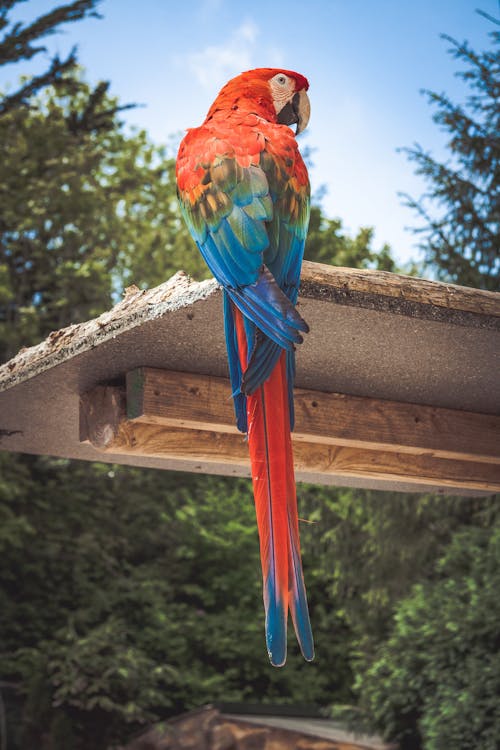
Birds are innocuous. Typically the worst that can happen from any encounter is a soiled shirt. Contrast that with too-close, potentially dangerous meetings with certain reptiles (venomous snakes, crocodiles), amphibians (frogs and salamanders with toxic skin secretions), fish (shark dangers), and mammals (bears or big cats). While it is true that an Ostrich or cassowary can injure with a swift kick, such damaging encounters are extremely rare in the wild. Safety undoubtedly contributes to birds being the most frequently watched wildlife.
Hunting for food (for example, bushmeat), for sport, for trade, or in response to human-wildlife
conflicts, can be a driver of habitat degradation, leading to cascading indirect effects on ecosys-
tems as processes such as seed dispersal, herbivory, or predation are changed or impaired. This is
amplified at lower latitudes owing to a latitudinal gradient in biotic interactions (79). Loss of seed-
dispersing species like hornbills results in a disturbance-mediated drift in tree species composition,
with cascading impacts on community structure and even forest carbon stocks (80). Functional ex-
tinction of large raptors and large mammalian predators owing to conflicts over livestock or game
may act in synergy with land-use change to promote mesopredator release, leading to declines
in ground-nesting birds (81) or changes in vegetation structure following overbrowsing by bur-
geoning deer populations. As well as promoting indirect effects, hunting can also drive declines
in targeted species, resulting in their endangerment. Loss of large-bodied bird species in acces-
sible unprotected tropical forests is widespread and may be the most important threat to some
species like Wattled Curassow (Crax globulosa) and other galliformes in landscapes less affected by
habitat loss. Such defaunation can be pervasive; for example, across Northeast India, Indochina,
Sundaland, and the Philippines, large areas of suitable habitat have few species of vertebrates
weighing more than 1 kg (82). Defaunation is not an exclusively tropical phenomenon, and unsus-
tainable extraction for food, sometimes coupled with sport hunting, remains an issue at temperate
latitudes too. For example, 11–36 million birds are estimated to be killed/taken illegally in the
Mediterranean region, including 2 million in Italy (83). Migratory birds are at particular risk of
overharvesting. For example, Jiguet et al. (84) recently demonstrated that Ortolan Buntings (Em-
beriza hortulana) trapped in South West France come from declining northern and western Eu-
ropean populations rather than stable populations elsewhere, as claimed by hunting advocates—a
finding that supports a ban on the harvest of the species. Hunting may also have significant sub-
lethal effects through disturbance, resulting in reduced habitat quality (85) and indirect lethal
impacts through the ingestion of lead shot by target and nontarget species (86). Marine over-
harvesting also impacts birds, directly through fisheries bycatch and indirectly by prey depletion
(87).
Unlike hunting, which is more typically a local phenomenon driven by demand for food or
sport, wildlife trade is driven by demands for species as pets or products. For example, Helmeted
Hornbills (Rhinoplax vigil), which are found across 3,570,000 km2 of Southeast Asia, are now
classified as Critically Endangered owing to high demand for their casques in China.
As people learn about birds and bird-watching, inevitably they develop an appreciation for bird diversity. This brings us to the purpose of this book, which is to introduce readers to all the world’s bird types. The primary organization of the book follows scientific animal classification, in particular, the bird species of the world separated into groups called orders and families. If you are unfamiliar with animal classification or need to refresh your memory, explanations and definitions are below. I have followed a classification that divides birds of the world into about two hundred families and about 9,750 species (generally following the classifications of the Lynx Edicions Handbook of the Birds of the World, and the 5th edition of J. F. Clements, Birds of the World: A Checklist). At the end of the book are questions and answers on diversity, abundance, and geography of birds. Several seemingly simple questions—How many kinds of birds are there? Why are some birds abundant but others rare? Why do some occur in such small numbers that they are threatened with extinction? Where are birds located and why?—have fairly complex answers. Understanding these basics of avian diversity and biogeography is central to attaining a broad appreciation of the feathered vertebrates
